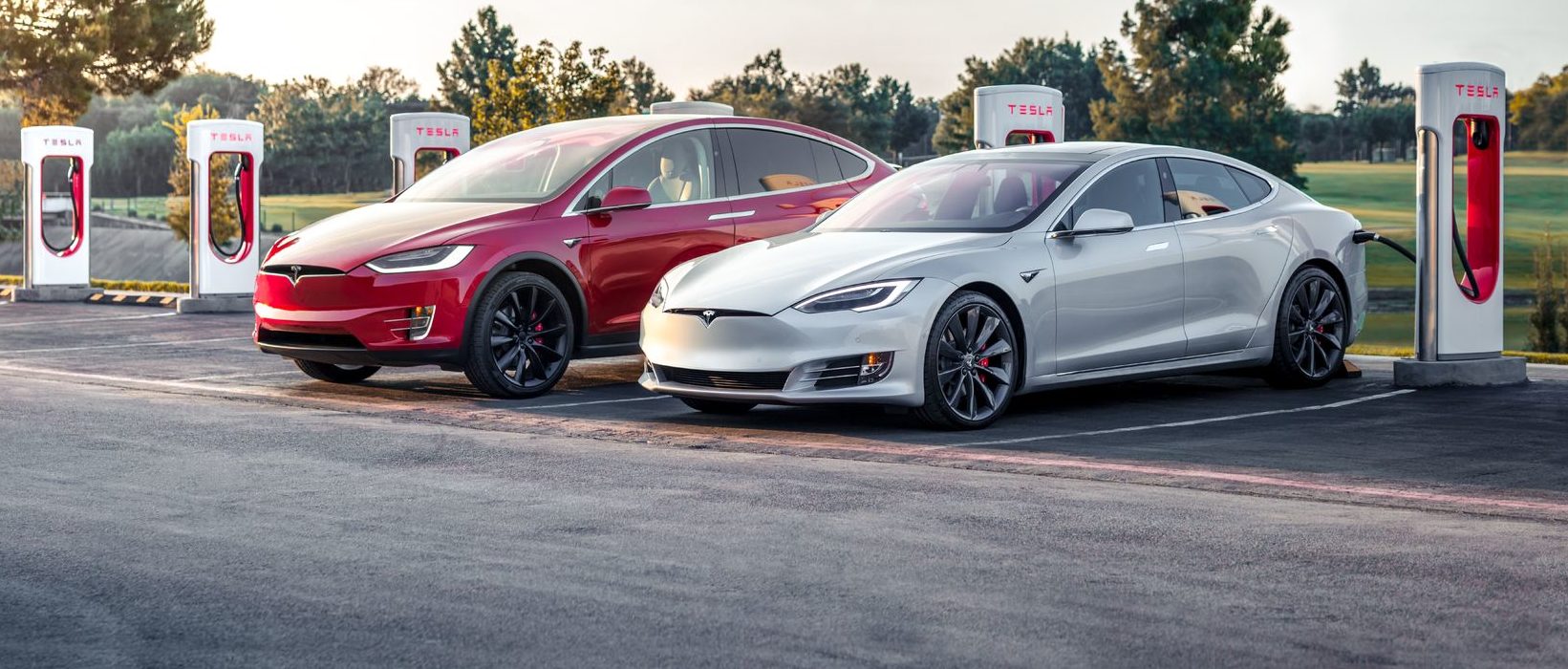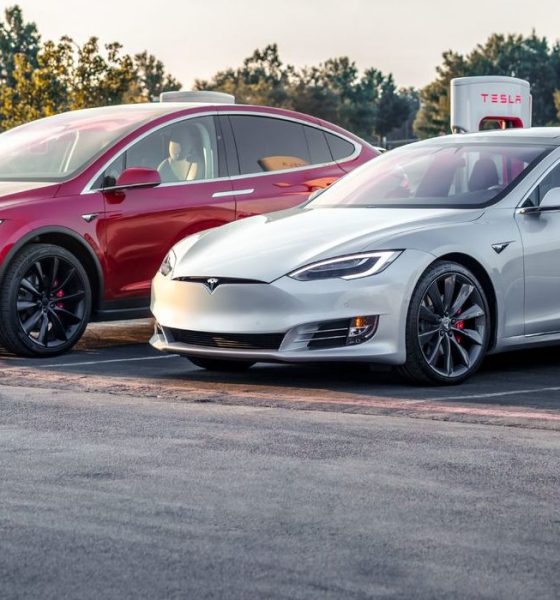

News
Tesla lowers Model S and Model X price, standardizes battery pack strategy
Following Tesla’s launch of the highly-anticipated $35,000 Standard Model 3, the electric car maker has implemented price adjustments for its flagship Model S and Model X line. With the recent reductions in place, versions of the Model S and X now cost up to $18,000 less than their previous prices.
Tesla Model S

Accessing the order page for the Model S, customers will see that the vehicle is offered in three variants — Standard, Long Range, and Performance. The Standard Range Model S starts at $79,000 and is capable of traveling 270 miles per charge. The vehicle has a 0-60 mph time of 4.2 seconds and a top speed of 140 mph. Despite its range, it should be noted that this Model S variant is equipped with a software-limited battery pack, the capacity of which is yet to be revealed by Tesla.
The Long Range Model S, which costs $83,000 has a range of 335 miles per charge, has a 0-60 mph time of 4.1 seconds and a top speed of 155 mph. This variant, dubbed the “Extended Range Model S” prior to the recent adjustments, started at $93,000.
Lastly, the Model S Performance has a range of 315 miles per charge, a 0-60 mph time of 3.0 seconds, a top speed of 155 mph, and a starting price of $99,000, a notable reduction over its previous price of $112,000. Customers who prefer to experience the car’s ferocity can add the Ludicrous Mode upgrade for $15,000, which reduces the 0-60 mph time to 2.4 seconds. With the Ludicrous Mode upgrade, the Tesla Model S Performance now starts at $114,000, a whopping $18,000 less than its previous price of $132,000.
Tesla Model X

The Tesla Model X does not have a Standard range option. Instead, the all-electric SUV is only offered as a Long Range or a Performance variant. The Long Range Model X, which has a 295-mile range, a top speed of 155 mph, and a 0-60 mph time of 4.7 seconds, currently costs $88,000. This is $8,000 less than its previous price of $96,000.
The Model X Performace, which has 289 miles of range, a top speed of 155 mph, and a 0-60 mph time of 3.5 seconds, starts at $104,000, a full $13,000 less than its previous price of $117,000. With Ludicrous Mode, which lowers the Model X Performance’s 0-60 mph time to just 2.8 seconds, the Model X Performance now starts at $119,000, $18,000 less than its previous price of $137,000.
Tesla’s new pricing strategy is notably aggressive. The Model S and Model X have always been costly vehicles, but after these adjustments, they have become far more attainable for a much larger demographic. Coupled with the release of the $35,000 Model 3, Tesla’s reduced prices for the Model S and X give potential customers an option for practically every price bracket.
Based on a blog post announcing the new Model 3 variants, Tesla explained that it was able to reduce the costs of its vehicles by shifting all of its sales to an online-only model moving forward. This would allow Tesla to sell in every state in the United States, but it will likely result in yet another round of layoffs as the company closes “many” of its stores. Tesla has pledged to significantly increase its service fleet as well, in order to accommodate the influx of vehicles that will be added in the near future.

News
Tesla China delivery centers look packed as 2025 comes to a close
Needless to say, it appears that Tesla China seems intent on ending 2025 on a strong note.

Tesla’s delivery centers in China seem to be absolutely packed as the final days of 2025 wind down, with photos on social media showing delivery locations being filled wall-to-wall with vehicles waiting for their new owners.
Needless to say, it appears that Tesla China seems intent on ending 2025 on a strong note.
Full delivery center hints at year-end demand surge
A recent image from a Chinese delivery center posted by industry watcher @Tslachan on X revealed rows upon rows of freshly prepared Model Y and Model 3 units, some of which were adorned with red bows and teddy bears. Some customers also seem to be looking over their vehicles with Tesla delivery staff.
The images hint at a strong year-end push to clear inventory and deliver as many vehicles as possible. Interestingly enough, several Model Y L vehicles could be seen in the photos, hinting at the demand for the extended wheelbase-six seat variant of the best-selling all-electric crossover.
Strong demand in China
Consumer demand for the Model Y and Model 3 in China seems to be quite notable. This could be inferred from the estimated delivery dates for the Model 3 and Model Y, which have been extended to February 2026 for several variants. Apart from this, the Model Y and Model 3 also continue to rank well in China’s premium EV segment.
From January to November alone, the Model Y took China’s number one spot in the RMB 200,000-RMB 300,000 segment for electric vehicles, selling 359,463 units. The Model 3 sedan took third place, selling 172,392. This is quite impressive considering that both the Model Y and Model 3 are still priced at a premium compared to some of their rivals, such as the Xiaomi SU7 and YU7.
With delivery centers in December being quite busy, it does seem like Tesla China will end the year on a strong note once more.
News
Tesla Giga Berlin draws “red line” over IG Metall union’s 35-hour week demands
Factory manager André Thierig has drawn a “red line” against reducing Giga Berlin’s workweek to 35 hours, while highlighting that Tesla has actually increased its workers’ salaries more substantially than other carmakers in the country.

Tesla Giga Berlin has found itself in a new labor dispute in Germany, where union IG Metall is pushing for adoption of a collective agreement to boost wages and implement changes, such as a 35-hour workweek.
In a comment, Giga Berlin manager André Thierig drew a “red line” against reducing Giga Berlin’s workweek to 35 hours, while highlighting that Tesla has actually increased its workers’ salaries more substantially than other carmakers in the country.
Tesla factory manager’s “red line”
Tesla Germany is expected to hold a works council election in 2026, which André Thierig considers very important. As per the Giga Berlin plant manager, Giga Berlin’s plant expansion plans might be put on hold if the election favors the union. He also spoke against some of the changes that IG Metall is seeking to implement in the factory, like a 35-hour week, as noted in an rbb24 report.
“The discussion about a 35-hour week is a red line for me. We will not cross it,” Theirig said.
“(The election) will determine whether we can continue our successful path in the future in an independent, flexible, and unbureaucratic manner. Personally, I cannot imagine that the decision-makers in the USA will continue to push ahead with the factory expansion if the election results favor IG Metall.”
Giga Berlin’s wage increase
IG Metall district manager Jan Otto told the German news agency DPA that without a collective agreement, Tesla’s wages remain significantly below levels at other German car factories. He noted the company excuses this by referencing its lowest pay grade, but added: “The two lowest pay grades are not even used in car factories.”
In response, Tesla noted that it has raised the wages of Gigafactory Berlin’s workers more than their German competitors. Thierig noted that with a collective agreement, Giga Berlin’s workers would have seen a 2% wage increase this year. But thanks to Tesla not being unionized, Gigafactory Berlin workers were able to receive a 4% increase, as noted in a CarUp report.
“There was a wage increase of 2% this year in the current collective agreement. Because we are in a different economic situation than the industry as a whole, we were able to double the wages – by 4%. Since production started, this corresponds to a wage increase of more than 25% in less than four years,” Thierig stated.
News
Tesla is seeing a lot of momentum from young Koreans in their 20s-30s: report
From January to November, young buyers purchased over 21,000 Teslas, putting it far ahead of fellow imported rivals like BMW and Mercedes-Benz.

Tesla has captured the hearts of South Korea’s 20s-30s demographic, emerging as the group’s top-selling imported car brand in 2025. From January to November, young buyers purchased over 21,000 Teslas, putting it far ahead of fellow imported rivals like BMW and Mercedes-Benz.
Industry experts cited by The Economist attributed this “Tesla frenzy” to fandom culture, where buyers prioritize the brand over traditional car attributes, similar to snapping up the latest iPhone.
Model Y dominates among young buyers
Data from the Korea Imported Automobile Association showed that Tesla sold 21,757 vehicles to the 20s-30s demographic through November, compared to BMW’s 13,666 and Mercedes-Benz’s 6,983. The Model Y led the list overwhelmingly, with variants like the standard and Long Range models topping purchases for both young men and women.
Young men bought around 16,000 Teslas, mostly Model Y (over 15,000 units), followed by Model 3. Young women followed a similar pattern, favoring Model Y (3,888 units) and Model 3 (1,083 units). The Cybertruck saw minimal sales in this group.
The Model Y’s appeal lies in its family-friendly SUV design, 400-500 km range, quick acceleration, and spacious cargo, which is ideal for commuting and leisure. The Model 3, on the other hand, serves as an accessible entry point with lower pricing, which is valuable considering the country’s EV subsidies.
The Tesla boom
Experts described Tesla’s popularity as “fandom culture,” where young buyers embrace the brand despite criticisms from skeptics. Professor Lee Ho-geun called Tesla a “typical early adopter brand,” comparing purchases to iPhones.
Professor Kim Pil-soo noted that young people view Tesla more as a gadget than a car, and they are likely drawn by marketing, subsidies, and perceived value. They also tend to overlook news of numerous recalls, which are mostly over-the-air software updates, and controversies tied to the company.
Tesla’s position as Korea’s top import for 2025 seems secured. As noted by the publication, Tesla’s December sales figures have not been reported yet, but market analysts have suggested that Tesla has all but secured the top spot among the country’s imported cars this year.








